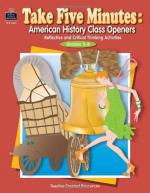|
This section contains 638 words (approx. 3 pages at 300 words per page) |

|
Epic Landscapes.
American painting at midcentury was dominated by the Hudson River School: Thomas Cole (1801-1848), Asher Durand (1796-1886), Frederic Church (1826—1900), and other artists whose epic landscapes reflected a young nation's sense of manifest destiny. The poet William Cullen Bryant (1794-1878) gloried in the "scenes of wild grandeur" that Cole painted. The "mountaintops with their mighty growth of forest never touched by the axe," "banks of streams never deformed by culture," and "depths of skies bright with the hues of our own climate" were signs of paradise on earth. Over time, of course, the earthly Eden celebrated by the Hudson River painters gave way to the urban, industrial realities of the post—Civil War period. Two American artists who came of age in the late nineteenth century pioneered a realistic style of painting that more accurately represented a changed American "landscape."
Winslow Homer.
|
This section contains 638 words (approx. 3 pages at 300 words per page) |

|




